AWS Certified SysOps Administrator - Associate
Domain 6 Cost and Performance Optimization
Setting Up AWS Budgets to Monitor and Control Costs
Welcome to this detailed guide on configuring AWS Budgets to notify you, monitor spending, and control your cloud costs effectively. AWS Budgets empowers you to track expenditures, manage your cost structure, and receive timely alerts when spending nears or exceeds your predefined limits. Whether you are operating with fixed budgets, variable thresholds, or usage-based targets, AWS Budgets provides the flexibility you need for optimal cloud cost management.
AWS Budgets can alert you when, for example, your budget target increases by 5% each month and notifications are sent when you reach 80% of your budgeted amount. This proactive approach keeps you within your service limits or free tier. Additionally, you can use AWS Budgets to monitor reserved instances (RIs) or Savings Plans, with notifications triggered if their utilization falls below 80%.
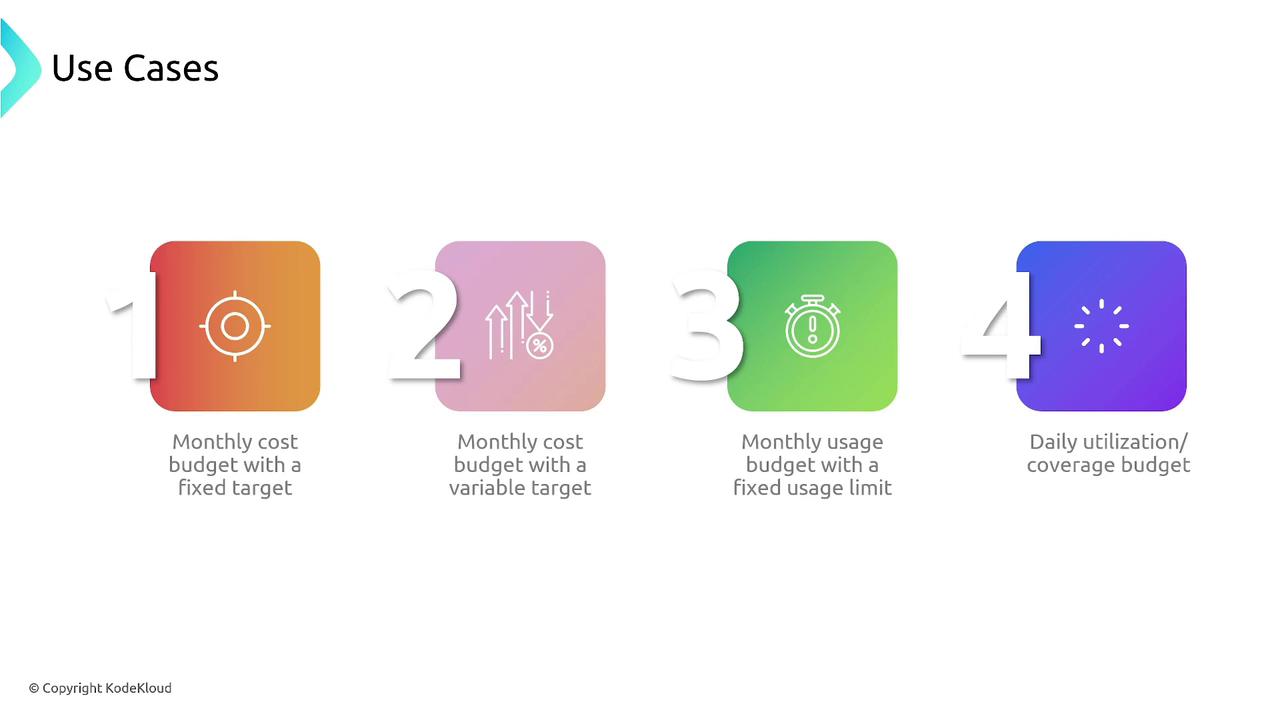
Key Benefits
The main advantages of using AWS Budgets include:
- Predictable spending in a pay-as-you-go cloud environment.
- Cost optimization by tracking expenditures across multiple AWS services.
- Strategic alerts and automated decision making.
- Enhanced accountability and informed decision-making with detailed analytics.
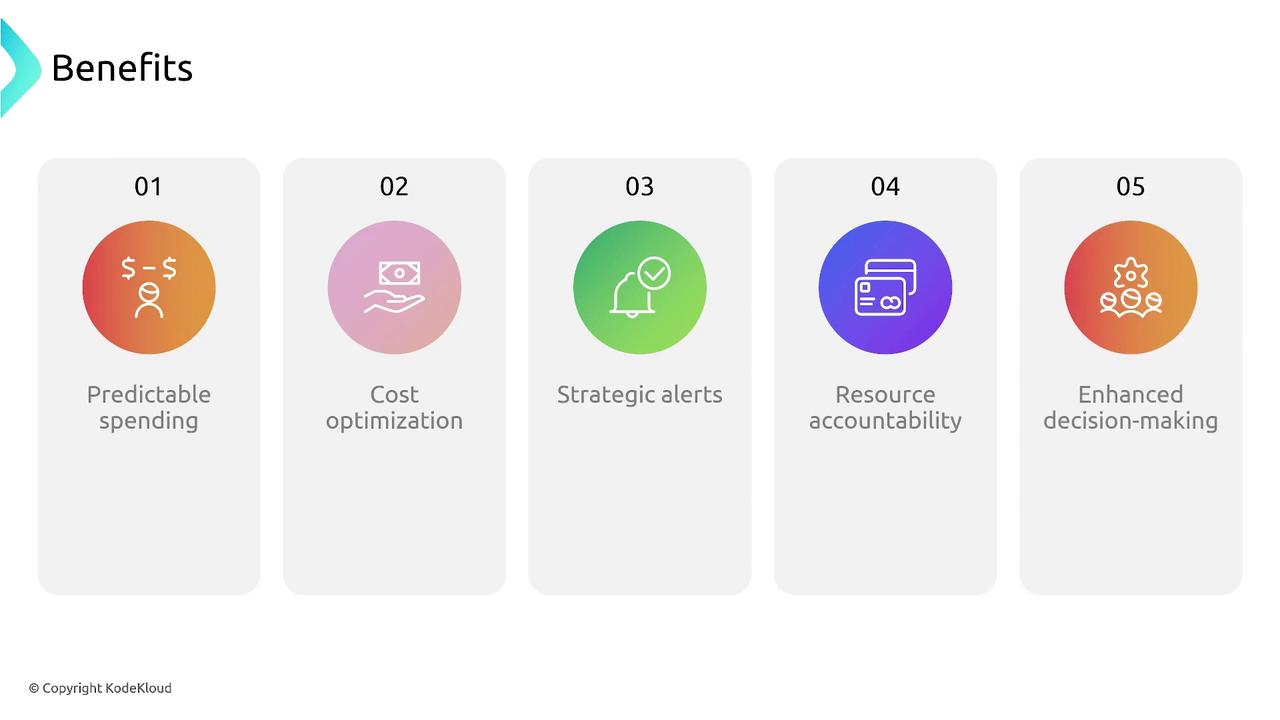
Types of Budgets in AWS
AWS Budgets supports several budget types. Understanding these types can help you tailor your monitoring approach based on your cost-management needs:
- Cost Budgets: Track your overall spending over a specified period.
- Usage Budgets: Monitor how much you utilize specific AWS services.
- Utilization Budgets: Keep an eye on reserved instance usage to ensure optimal performance.
- Coverage Budgets: Verify that you have sufficient coverage for your reserved instances.
- Savings Plans Budgets: Observe the utilization and coverage of your Savings Plans.
While reserved instances are often associated with EC2, they also apply to other AWS services. Savings Plans offer flexible options for general compute requirements, EC2-specific needs, and even services like SageMaker.

When configuring your budget, you will be prompted to select among the following types:
- Cost budget
- Usage budget
- Savings Plans budget
- Reservation budget
Each option provides detailed descriptions on monitoring reserved instances across services like EC2, RDS, Redshift, ElastiCache, and OpenSearch. For Savings Plans budgets, you must choose from predefined types to ensure appropriate coverage. You can also configure threshold notifications to alert you when approaching your budget limits.

Configuring Your Budget
Follow these steps to set up your AWS Budget:
Select the Budget Type:
Choose from the four available budget types based on your requirements.Specify the Budget Amount and Time Period:
Define your desired period (monthly, quarterly, or yearly) and decide whether the budget is fixed or variable. In the case of a variable budget, AWS Budgets can automatically adjust your budget using historical data. For example, if your average spend over the past six months was $100, your forecasted budget for the next period will also be $100, with alerts initiated if significant deviations occur.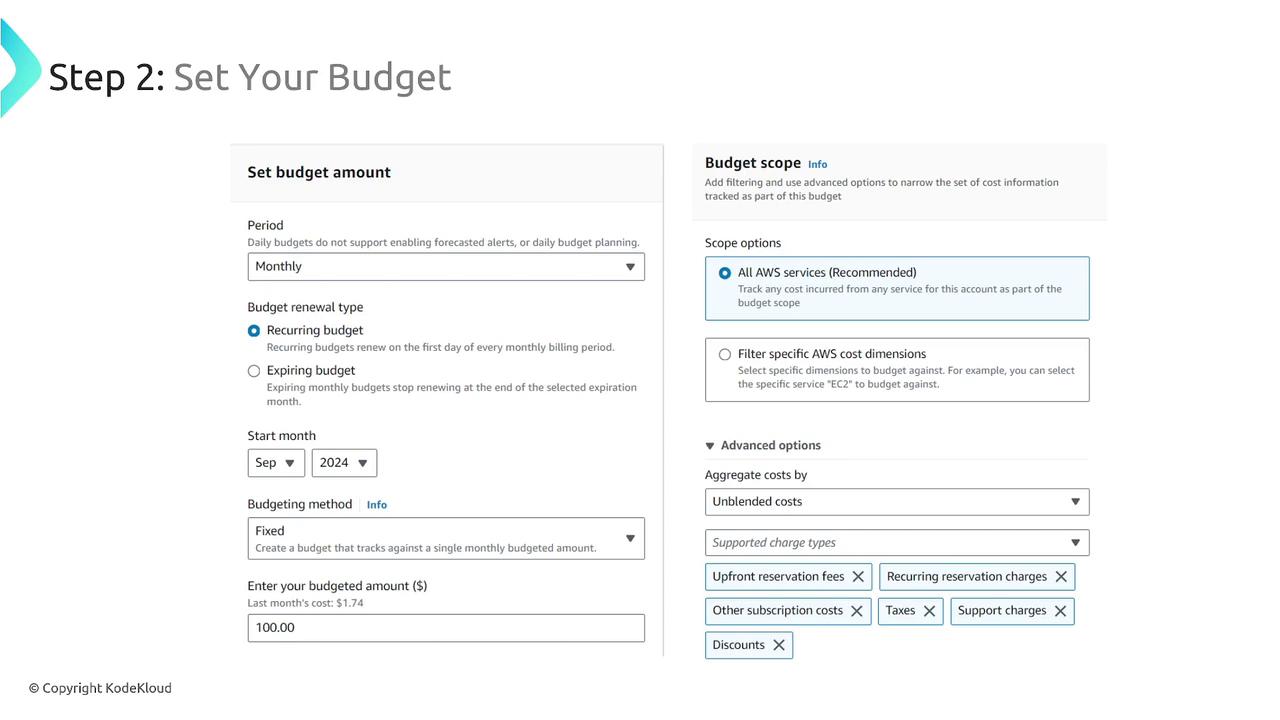
Define the Scope and Apply Filters:
Customize your budget by applying filters related to specific services, accounts, regions, instance types, or tags. This targeted approach allows you to focus on the areas most relevant to your spending. Common filters include service, account, region, and instance type, although advanced options like API operations and billing entities are also available.Set Up Alerts and Actions:
Configure notifications to alert you when spending reaches a defined percentage of your budget. Beyond alerts, you can attach automated actions. For instance, you could set an action to automatically stop or terminate EC2 instances if your spending exceeds a specified limit.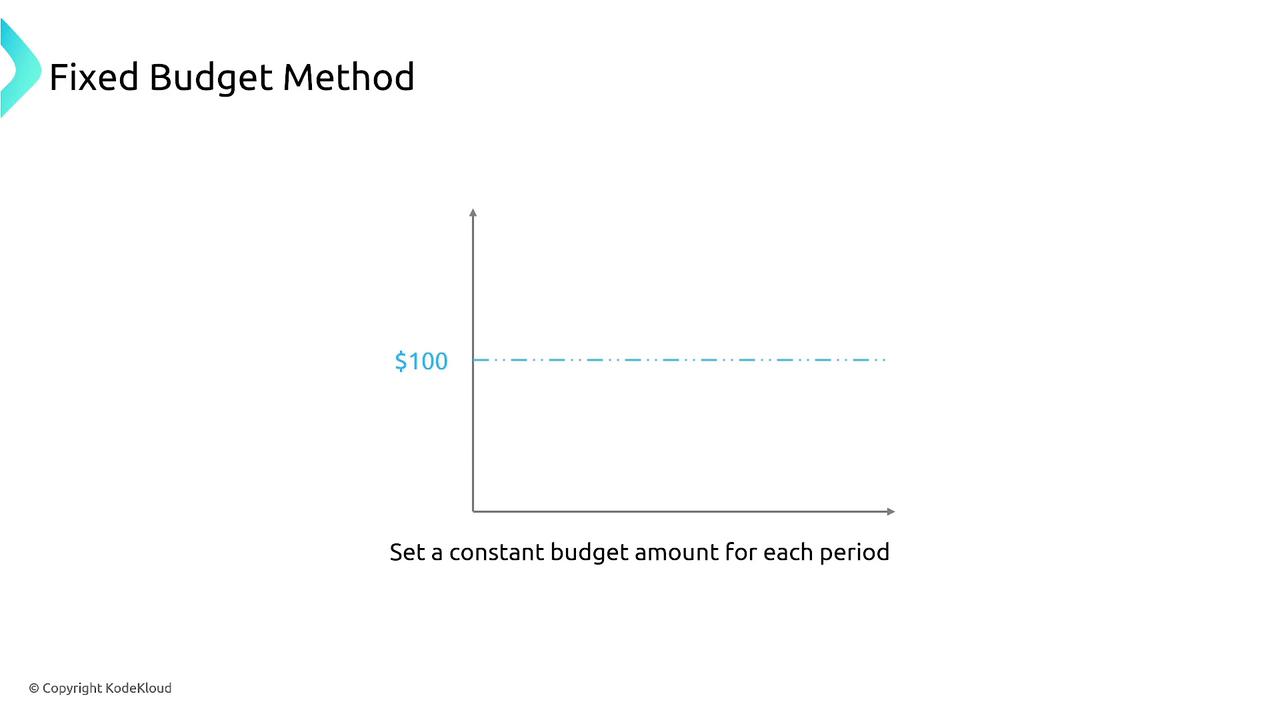
AWS Budgets supports both fixed and dynamic budgeting methods. The fixed method enforces a strict limit, whereas the variable method adjusts automatically based on historical cost data and usage patterns. This flexibility ensures proactive cost management and helps reduce unexpected expenses.

Configuring Alerts and Actions
After setting up your budget, configure alerts to ensure you stay informed:
- Set a notification to trigger when your spending reaches, for example, 75% of your budget.
- Choose whether the notification should only alert you or also execute automated actions.
For instance, if you want to automatically stop specific EC2 instances upon exceeding your budget threshold, you can attach these actions directly to your configuration.
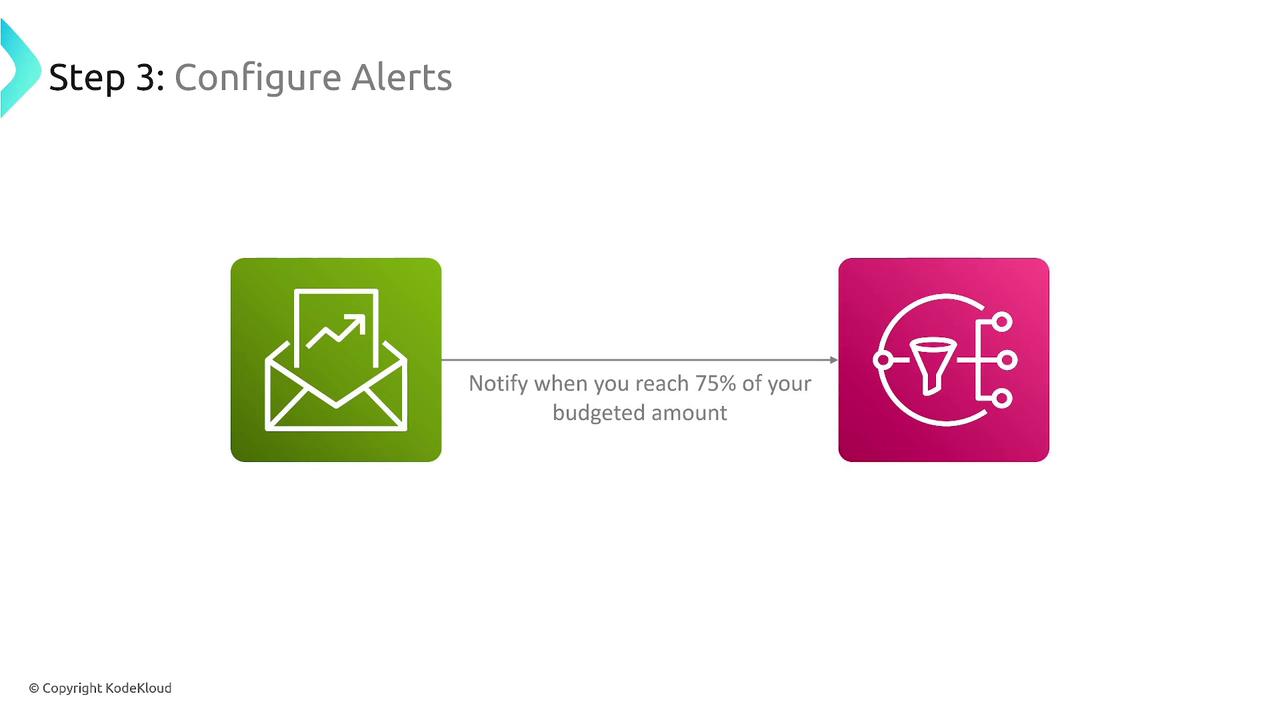
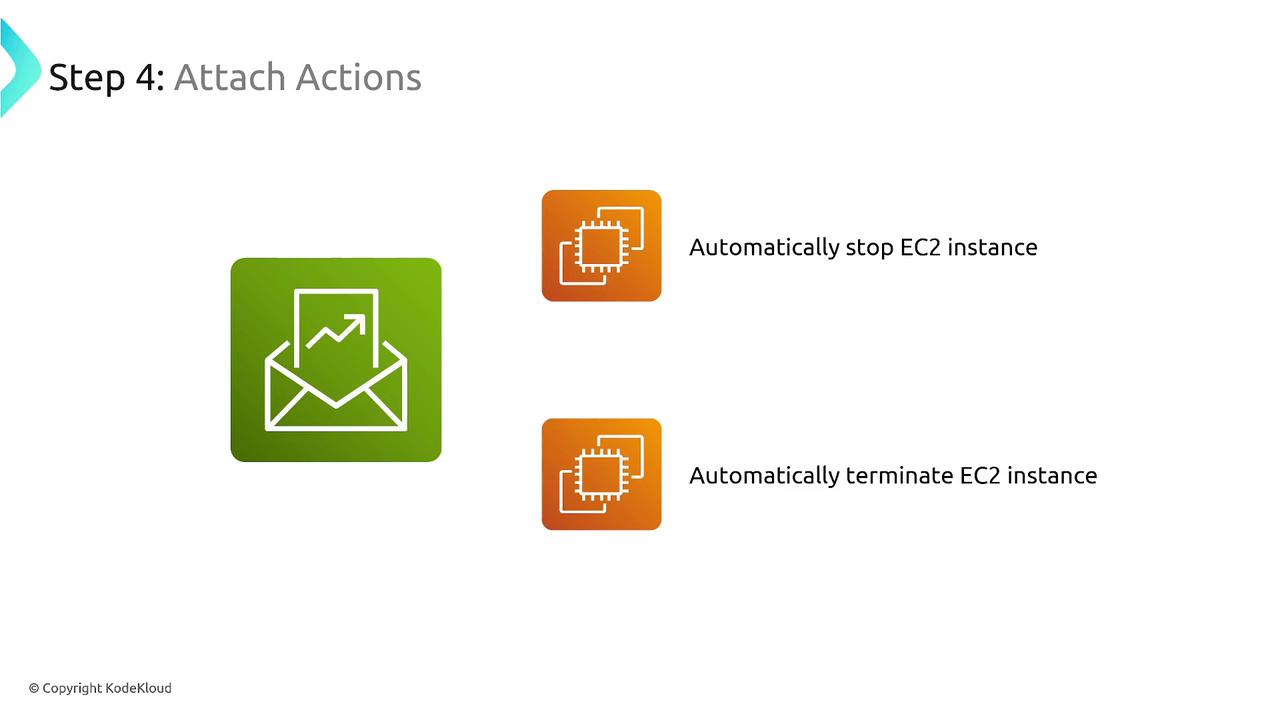
Automated Cost Control
Automating cost control measures through budget actions minimizes manual oversight, ensuring that your account expenses are managed efficiently.
Conclusion
Utilizing AWS Budgets allows you to maintain predictable spending, optimize your cloud costs, and manage your expenses proactively through strategic alerts and automated actions. This systematic approach to cloud cost management is crucial for maximizing the efficiency of your AWS infrastructure and is a vital skill for the AWS SysOps Associate exam.
Thank you for reading this guide. We look forward to seeing you in the next session.
For additional insights and best practices, check out the AWS Documentation and explore more resources related to AWS cost management.
Watch Video
Watch video content